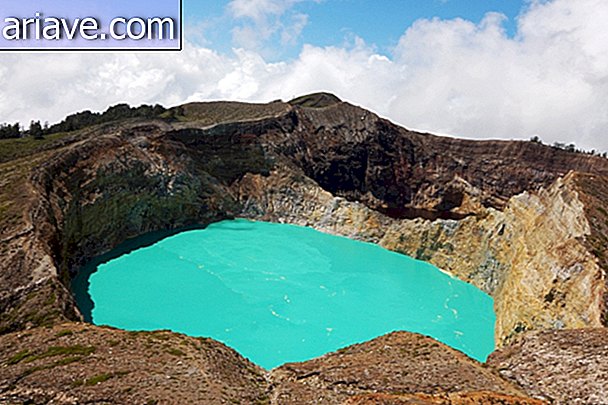Meet 5 buildings that survived major disasters
The world has gone through great tragedies, from devastating wars to tsunamis, typhoons and other destructive disasters.
During these events, besides the deaths of thousands of people, many buildings were lost, but some managed to resist bravely, surviving the most difficult weather conditions and human action. Check out some of them below, according to an article by Grace Murano of Oddee:
1 - The Brandenburg Gate

The Brandenburg Gate in Berlin is one of the most important and recognized landmarks of the German capital. The monument It was commissioned by King Frederick William II of Prussia as a sign of peace, designed by Carl Gotthard Langhans and built between 1788 and 1791.
The beautiful building gained even more visibility as a sad symbol of the division between the east and west, Soviet and British sectors (respectively) during World War II. It was the only milestone to survive the Allied bombing of the German capital in 1945, although it was badly damaged with bullet holes in the columns and nearby explosions.
At the time, the chariot (a chariot drawn by four horses) at the top of the monument was removed by the Soviet authorities and virtually destroyed. Then the large piece was restored. The Gate eventually became part of the Berlin Wall and was completely disrupted to pedestrian and car traffic for almost 30 years.
Following the peaceful reunification of Germany and the fall of the wall on the night of 9 to 10 November 1989, the opening of the Brandenburg Gate was rethought. It was refurbished in 2000 and today is one of the most visited monuments in Germany and Europe.
2 - The Shrine of Sanno

Symbol of a terrible time of destruction, Sanno Shrine, located about 800 meters southeast of where it was the hypocenter of the Nagasaki atomic bomb, is known for its stone torii (traditional Japanese portal linked to the Shinto tradition). leg only.
The one-base monument was one of the results of the catastrophic atomic bomb blast on August 9, 1945. One supporting column was knocked down, but the other somehow remained standing.
The whole neighborhood was reduced to rubble by the atomic bomb blast, but this gate, while located very close to the hypocenter, miraculously resisted the devastating force, retaining the hallmark of that terrible day of 1945.
3 - The Hiroshima Dome

Three days before Nagasaki occurred, the uranium atomic bomb was dropped on the Japanese city of Hiroshima, causing irreparable damage and thousands of deaths in an apocalyptic scenario. But the dome of a building withstood the devastating effects of radioactive bomb strength.
The building, which was designed by a Czech architect in 1915, had originally been used as an industrial affairs sector of Hiroshima Prefecture. As the building is located about 160 meters from the bomb's hypocenter, it was obviously hit hard and all the people inside were killed.
However, it was not completely destroyed, leaving part of its structure and the dome that was made of metal. It was scheduled to be demolished with the rest of the ruins, but plans were postponed as many people would like to make it a memorial of bombing and a symbol of peace. Finally, this happened and the building was preserved in this way, becoming a UNESCO World Heritage Site in 1996.
4 - The Horyu-Ji Pagoda Temple

In addition to suffering from atomic bomb attacks, Japan suffers from time to time with severe earthquakes due to the seismic instability of its location. The country has been hit by 7.0 or even higher quakes about 46 times since the Horyu-Ji Temple was built (“pagoda” style, which is a type of Buddhist structure) in 607 AD.
The five-story building, located in Sai-in, is 32.45 meters high. It is one of the oldest timber buildings in the world, and this raw material used in the central pillar may have been cut in 594, a date estimated by analysis. But then how did such a structure stand after so many earthquakes?
Pagoda technology came to Japan during the 6th century, along with Chinese Buddhism. On the continent, pagodas were traditionally built of stone. However, due to the instability of the country, this type of project was simply unsustainable.
After years of experimentation, Japanese builders have figured out how to adapt pagodas to unstable conditions using three design changes: the use of wide and heavy eaves, disconnected floors, and the shock-absorbing central pillar called shinbashira . With this structural style, the building stands upright.
5 - The Rahmatullah Mosque

December 26, 2004 was marked by a catastrophic event in the Indonesian region. A devastating 9.1 Richter scale earthquake shook the Indian Ocean off Sumatra's northern coast. The earthquake caused a terrible tsunami that swept several beaches around the Indian Ocean.
The effects of the tsunami were of gigantic magnitude. More than 230, 000 people died and thousands were injured and homeless. One of the affected cities was Lhoknga City, on the west coast of Sumatra, near the capital city of Aceh.
The city was razed, but a structure remained standing with all its grandeur. A mosque survived and stood firm in the midst of destruction. Many residents believe that divine intervention saved the Rahmatullah mosque.











